ABU SIMBEL
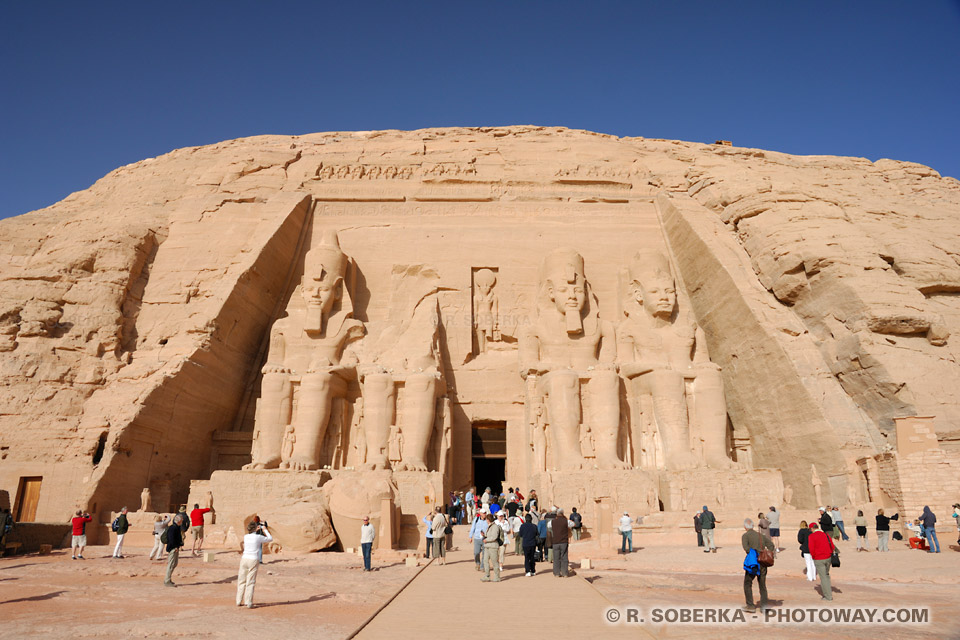
At the southernmost tip of Egypt: Abu Simbel - the Temples of Ramses II.
Located near the Sudanese border, about 143 miles (230 kilometers) south of Aswan by road, the temples of Abu Simbel are monumental structures carved into the cliff, dedicated to Pharaoh Ramses II and his wife Nefertari.
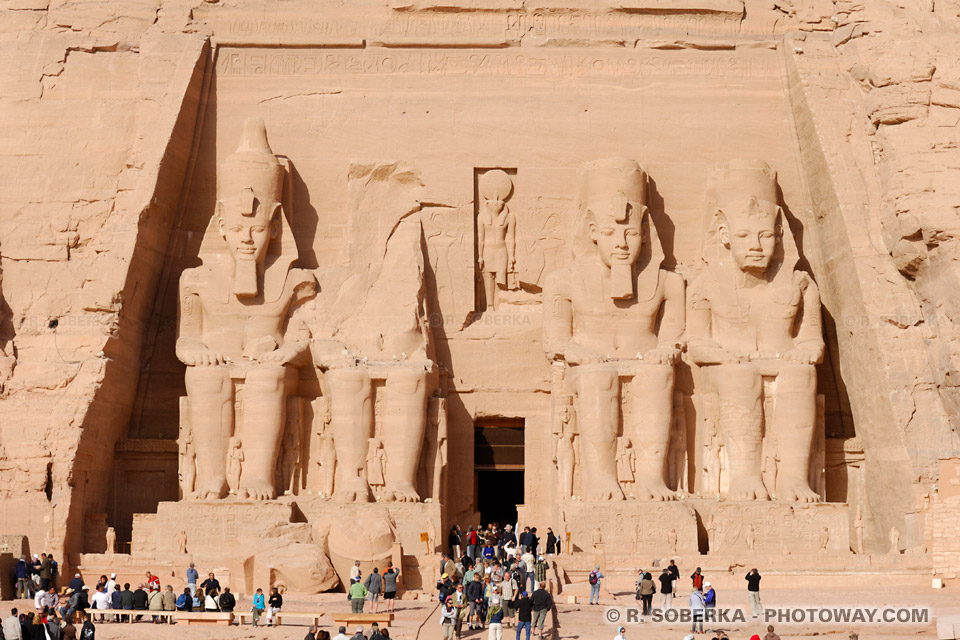
With its four colossal statues of Pharaoh Ramses II, each measuring nearly 66 feet (20 meters) tall, the Great Temple of Abu Simbel is one of the most visited attractions in Egypt.
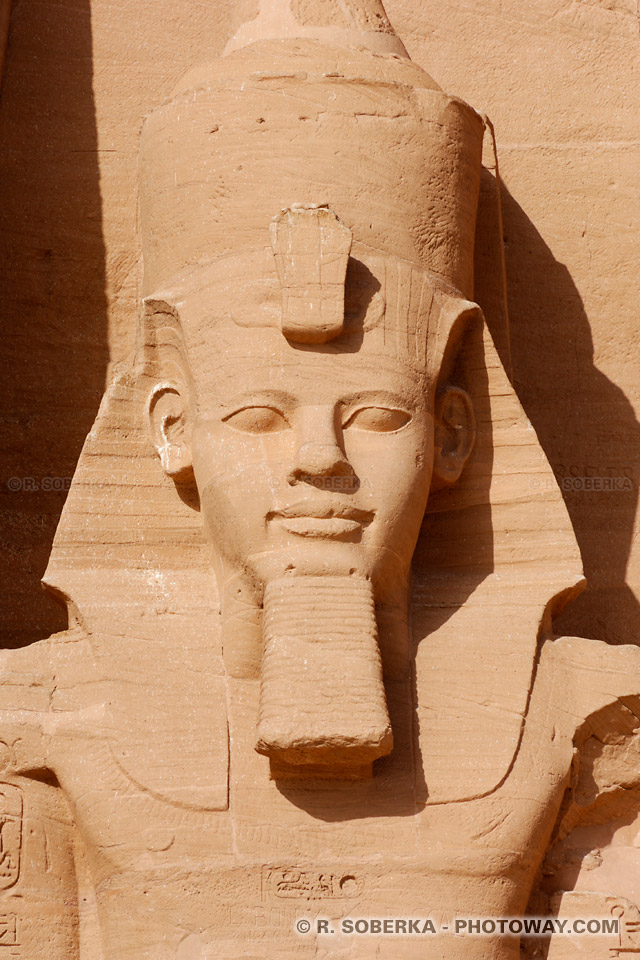
Each of the four colossi represents Ramses II, and the one on the far left is perhaps the best preserved.
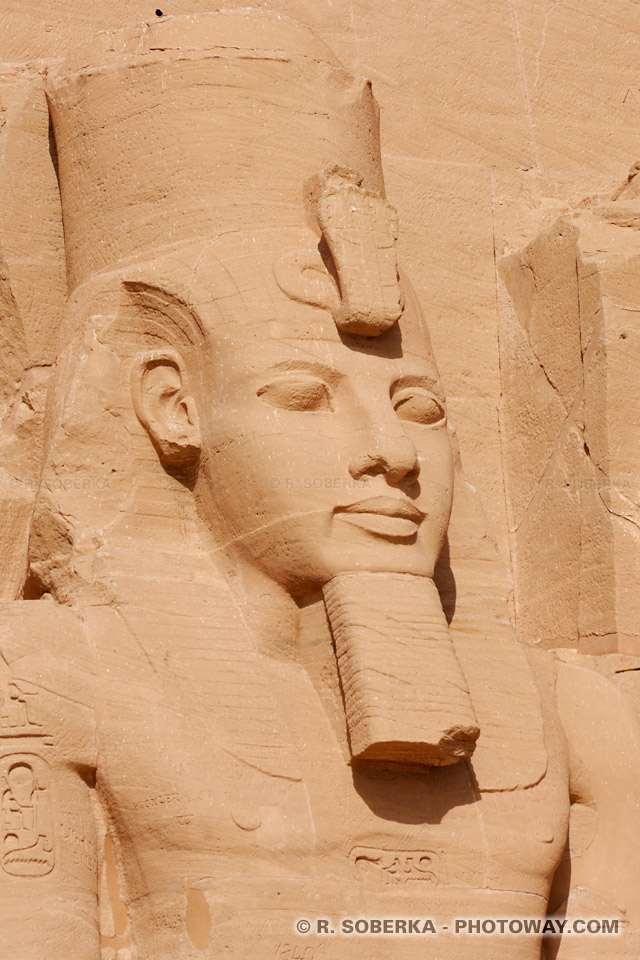
The third colossus is also in very good condition.
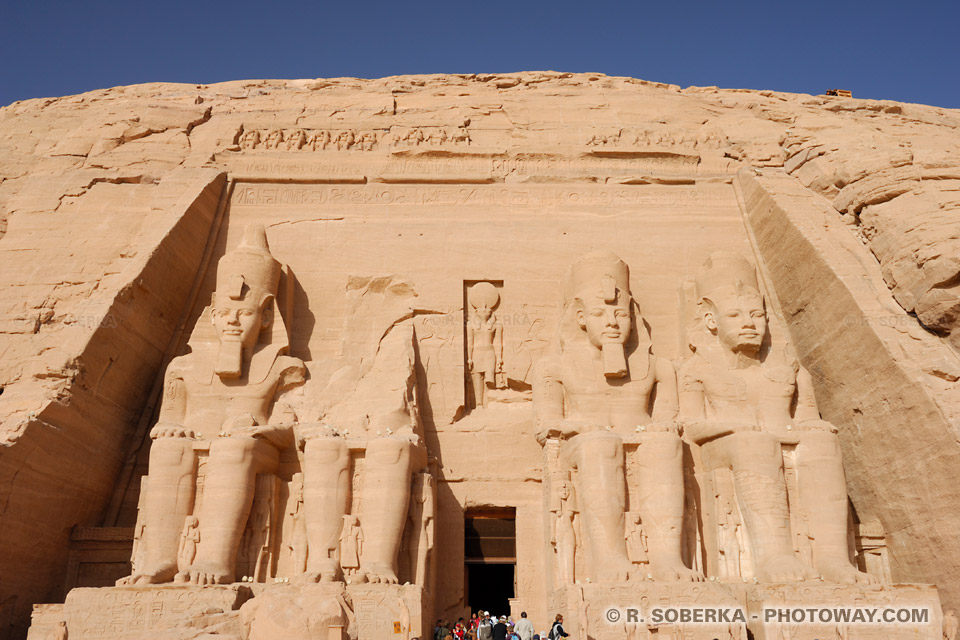
Remarkably, in 1965, the entire Temple of Ramses II was relocated about 330 feet (100 meters), much like the Temple of Philae was later moved.
It was saved from rising waters caused by the construction of the Aswan Dam.
It’s hard to imagine an entire temple being cut into 20-ton blocks and reassembled piece by piece!
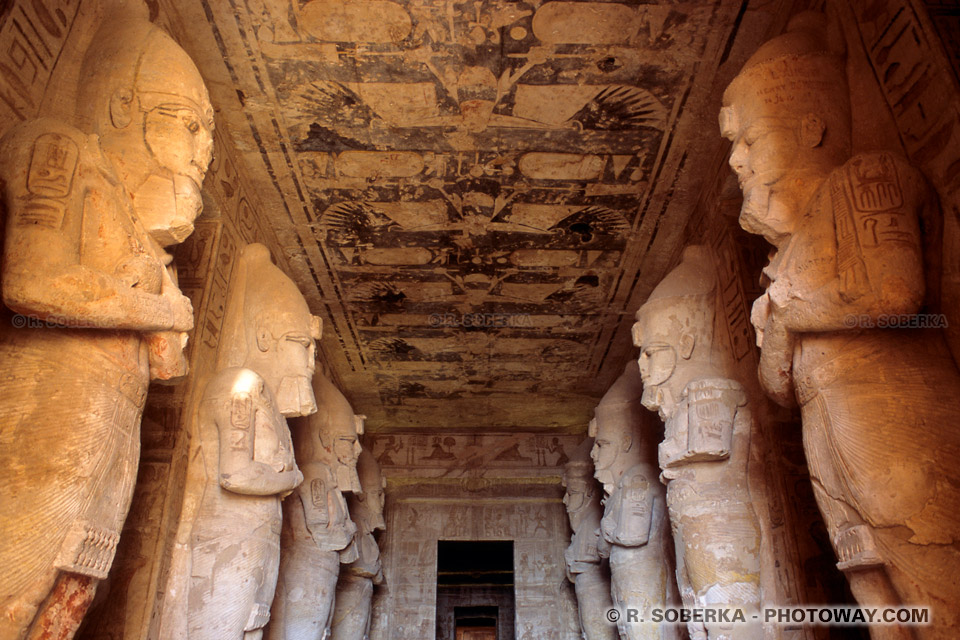
Let us step inside... The entrance hall is called the "Great Hall" or "Hypostyle Hall."
In this majestic space, eight colossal statues of Ramses II stand as guardians.
Each one measures about 33 feet (10 meters) tall and was carved directly into the rock.
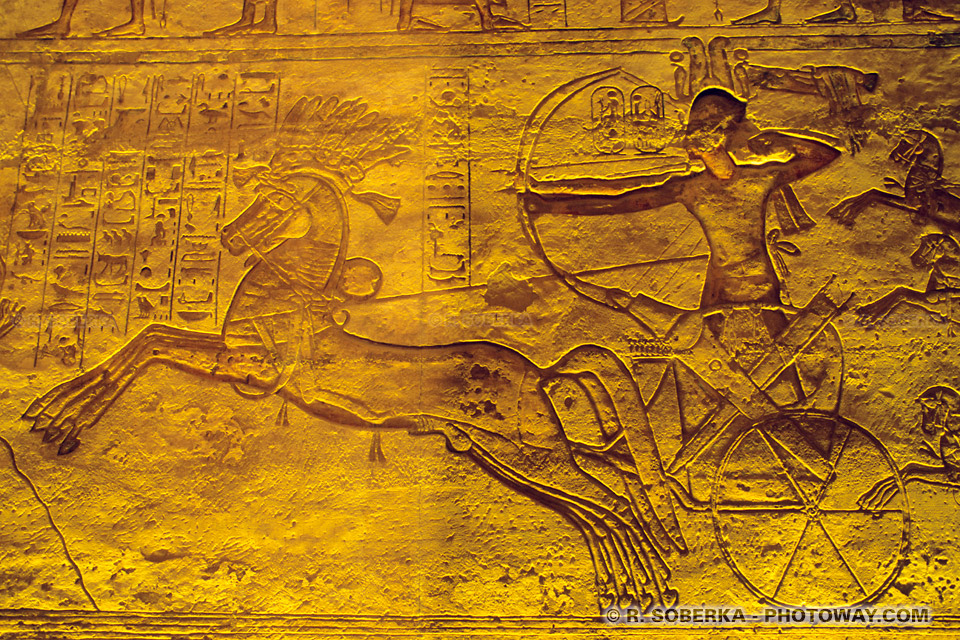
In the main Great Hall, numerous frescoes depicting Ramses II are still visible.
Here, a bas-relief shows Ramses II on his chariot, as a victorious warrior, triumphing over the Hittites during the Battle of Kadesh.
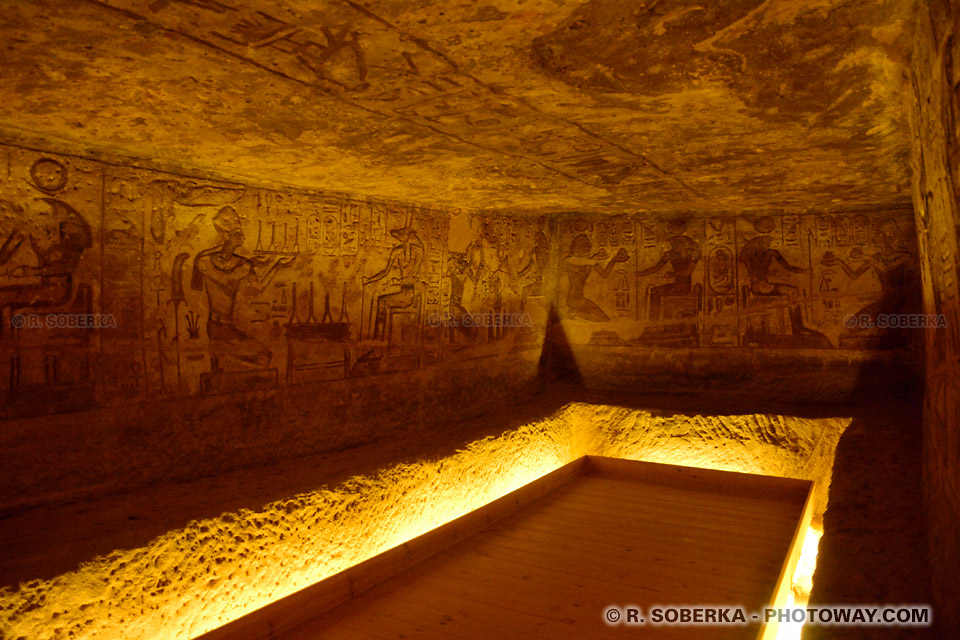
The adjoining chambers are also adorned with numerous bas-reliefs.
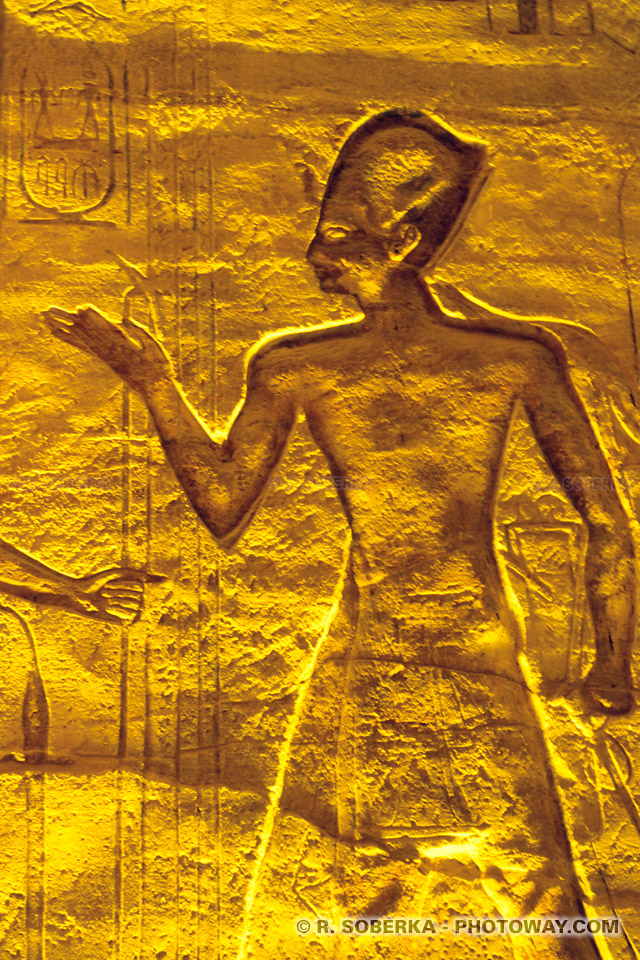
Once again, Pharaoh Ramses II!
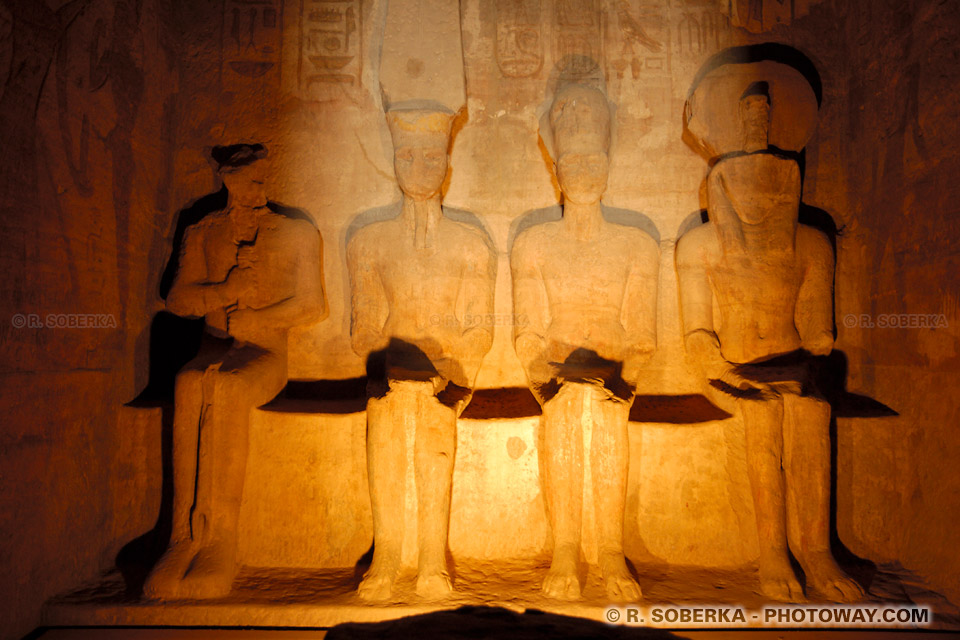
In the deepest part of the temple lies the sanctuary (or naos), where the effigy of Ramses II is surrounded by the gods Ptah, Amun, and Ra-Horakhty.
The sanctuary was designed so that, twice a year (around February 22 and October 22), the rising sun illuminates three of the four statues.
The statue of Ptah, associated with the underworld, remains in shadow, emphasizing its connection to darkness and the afterlife.
This phenomenon is a remarkable example of the architectural precision of ancient Egypt.
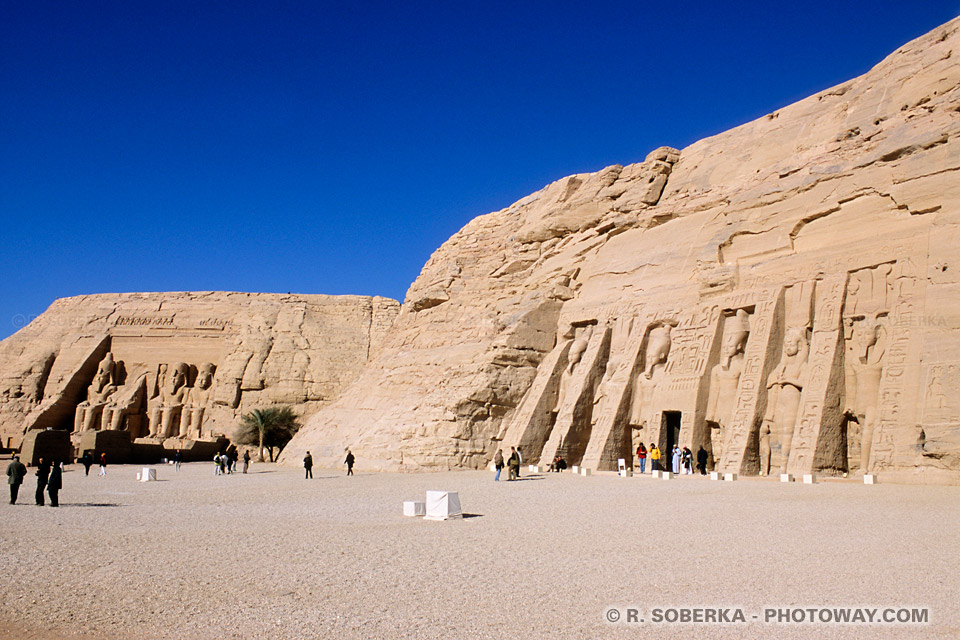
About 330 feet (100 meters) from the Temple of Ramses II lies the Temple of Nefertari, dedicated to his beloved wife and the goddess Hathor.
Like the Great Temple, the Temple of Nefertari was entirely cut and relocated in the 1960s during the major rescue operation led by UNESCO to protect the temples of Abu Simbel from the rising waters of Lake Nasser.
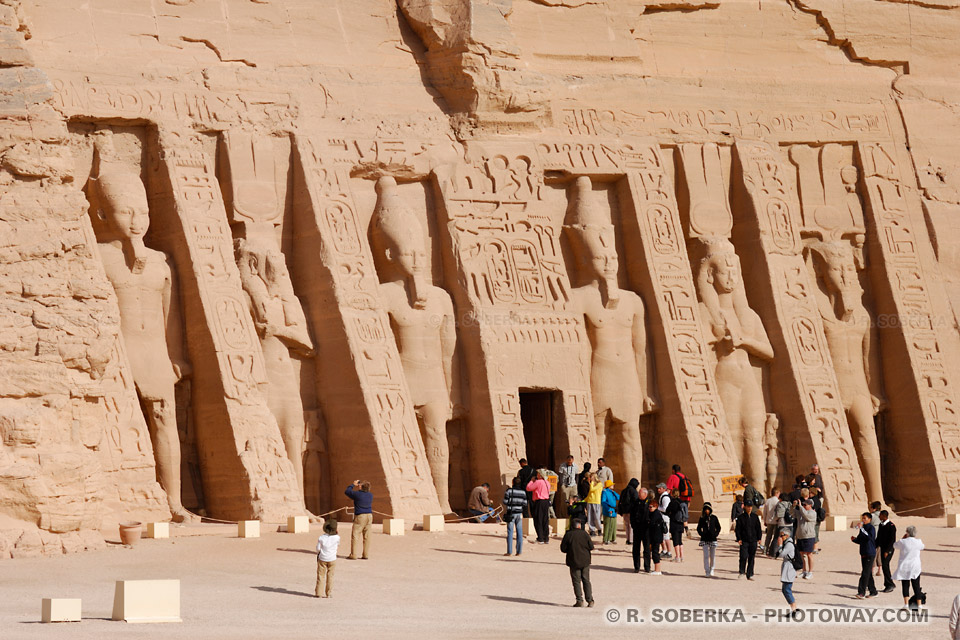
The entrance to the Temple of Nefertari is adorned with six majestic statues, all carved directly into the rock.
Four of them depict Ramses II in royal attire, while the other two portray Nefertari, adorned with the attributes of the goddess Hathor.
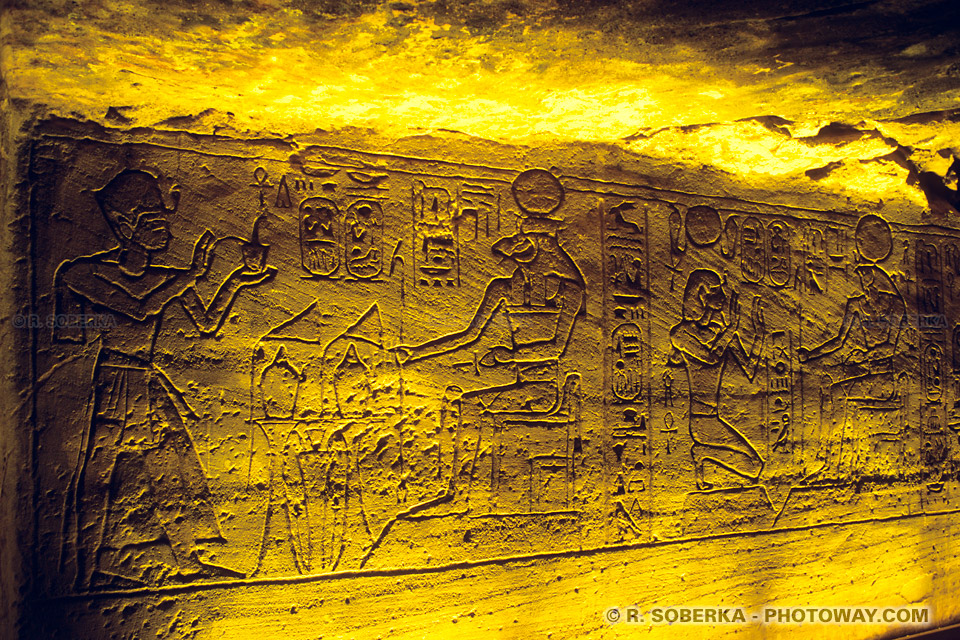
Though smaller, this temple is nonetheless richly adorned with bas-reliefs.
Abu Simbel: the significance of this site reflects the power and prestige of this royal couple in antiquity.
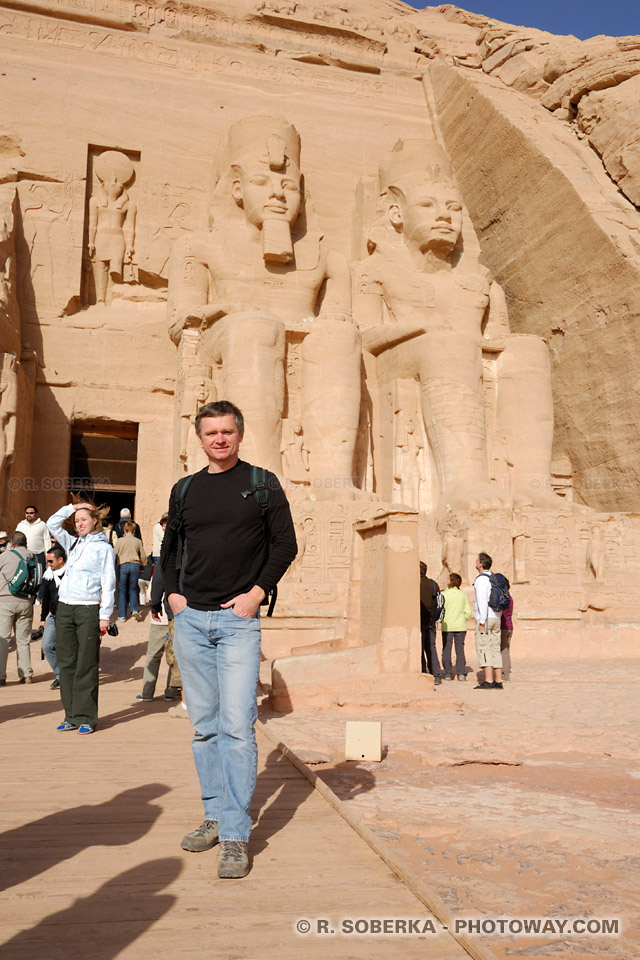
Thank you for joining me on this journey along the Nile Valley in Egypt.
The photographs you just saw are from two trips I took, one in 2002 and the other in 2010.
All photos of Abu Simbel © 2002 and 2010 by Richard Soberka